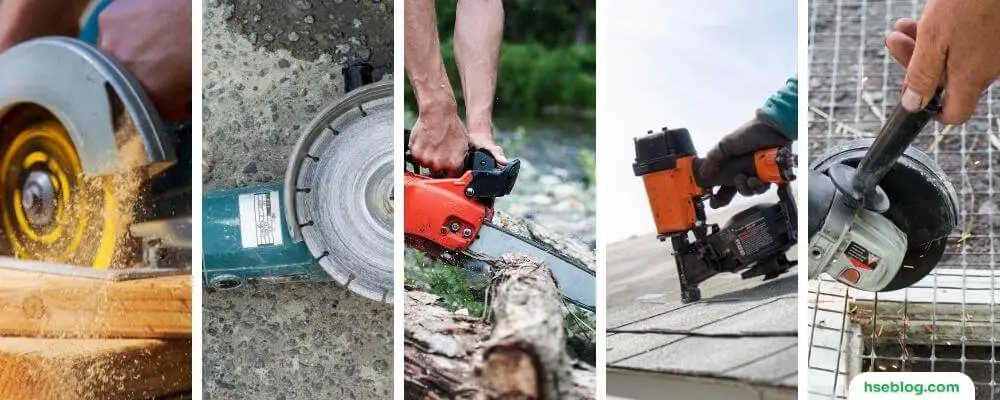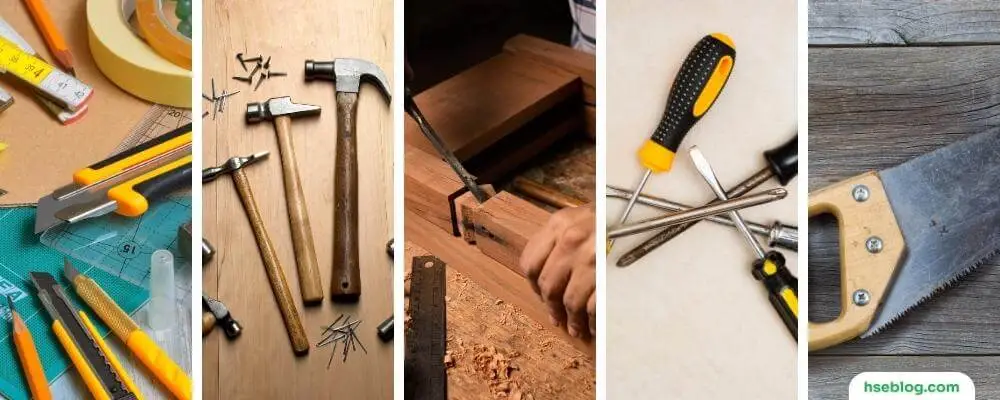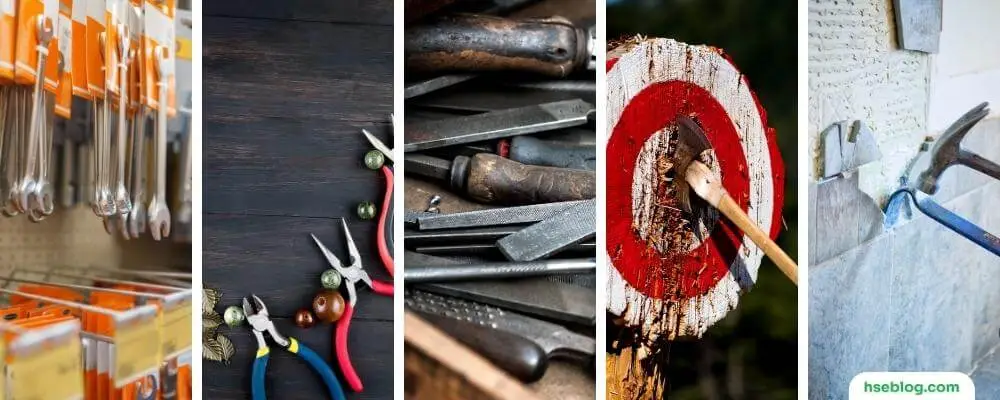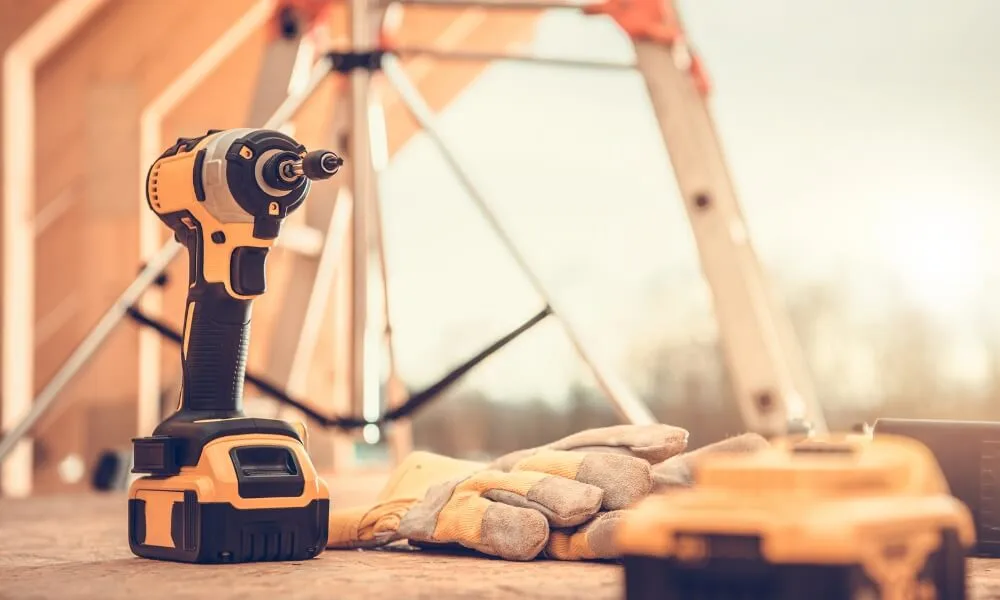In any workplace, efficiency, and precision are critical, and tools are the faithful allies that help us achieve those goals. Hand and power tools are integral to completing essential tasks from construction sites to everyday office maintenance. However, these handy instruments can be double-edged swords; they pose significant safety risks if not handled with the utmost care and respect.
This enlightening blog will delve into the 10 most dangerous hand & power tools used in the workplace. Understanding the potential hazards of these tools is the first step toward safeguarding yourself and your co-workers. So, whether you’re a seasoned professional, a DIY enthusiast, or someone entering the workforce, this guide will give you the knowledge needed to navigate the inherent perils of hand and power tools. Through awareness and proper practices, we can harness the power of these tools while keeping safety at the forefront. Let’s jump right in and equip ourselves with this crucial information!
10 Most Dangerous Power Tools Used In The Workplace
Power tools are essential in many workplaces but can pose significant risks if not used properly. Here are ten of the most dangerous power tools used in the workplace:

1. Table Saws
Table saws are stationary power tools used for making precise cuts in wood. The saw blade protrudes through a table’s surface, supporting the material being cut. Table saws come with various attachments like rip fences and miter gauges to make accurate cuts. However, the speed and power of the saw blade can cause wood to kick back toward the user or result in the operator’s hands coming into contact with the blade, leading to severe lacerations or amputations.
2. Circular Saws
These handheld power tools have circular blades used for cutting wood, metal, or plastic. They are versatile and portable, which makes them widely used. However, this versatility can lead to overconfidence and misuse. Kickbacks occur when the blade binds with the material, throwing the saw back toward the user. This can result in severe cuts or even death.
3. Chainsaws
Chainsaws consist of a chain with cutting teeth that is driven around a metal guide bar. They are mainly used for cutting trees and logs. Chainsaws are heavy and require strength to control. The chain’s fast motion can make them hard to control, and a slip or kickback can lead to the chain contacting the user, causing deep cuts or life-threatening injuries.
4. Nail Guns
Nail guns drive nails into wood or other materials at high speeds. They are popular in construction for their efficiency. However, unintentional discharge, nails penetrating the material, or ricocheting nails can cause severe puncture wounds.
5. Angle Grinders
An angle grinder is a handheld power tool used for grinding, cutting, and polishing surfaces. The tool has a high-speed rotating disc that can be fitted with different attachments for various tasks. The high-speed rotation can cause wheel breakage or kickbacks, and since it is often used on metal, hot sparks and debris can be ejected.

6. Power Drills
Power drills are handheld tools used for drilling holes in various materials. The drill bits can be changed according to the required size. Though seemingly basic, the torque the drill generates, combined with a rotating bit, can cause the tool to twist unexpectedly. Additionally, drilling into materials can cause fragments to fly off, possibly hitting the user’s eyes or skin.
7. Jigsaws
A jigsaw is a handheld power tool used for cutting intricate shapes in wood, metal, and other materials. The blade moves at high speeds in an up-and-down motion. If the blade gets stuck or binds with the material, it can break or cause the tool to jump, potentially leading to injuries.
8. Bench Grinders
Bench grinders are stationary tools that have grinding wheels or wire brushes attached for sharpening tools, grinding, or buffing. The wheels rotate at high speeds, and if they are damaged or incorrectly mounted, they can explode, sending fragments flying at high velocity.
9. Reciprocating Saws
Also known as Sawzalls, these tools have a blade that moves back and forth at high speeds. They are used for cutting through wood and metal. The rapid movement of the blade makes it easy to lose control of the tool, and if it suddenly breaks through material, the operator can be thrown off balance.
10. Power Hammers
Power hammers are tools used for forging or shaping metal. They deliver powerful blows to the metal piece, similar to a traditional hammer and anvil but with much more force. This force can be dangerous if the tool malfunctions, or if the metal piece is not properly secured, as it can send fragments or the tool itself flying.
10 Most Dangerous Hand Tools Used In The Workplace
Hand tools are commonly used in various workplaces, and while they may not be as powerful as their electric counterparts, they still carry inherent risks. Here are ten of the most dangerous hand tools used in the workplace:

1. Utility Knives
Utility knives, or box cutters, are common hand tools for cutting through cardboard or plastic. The blades are very sharp and can easily slip and cause deep lacerations if not handled with care. Retractable blades offer some safety, but even so, a momentary lack of attention can result in injury.
2. Hammers
Hammers are used for driving nails, brads, or other fasteners into materials. The forceful swinging motion required when using a hammer can result in mishits, where the user may strike their own hand or fingers. Additionally, striking a hard surface or metal can cause debris or fragments to fly off, potentially causing eye injuries.
3. Chisels
Chisels are used for carving or cutting hard materials such as wood or metal. They require the use of force, often from a hammer. A chisel can slip out of position, and if the user’s hand is in the way, it can cause serious puncture wounds or lacerations.
4. Screwdrivers
Screwdrivers are used for driving screws into materials. When used improperly, such as as a pry bar or when excessive force is applied, the screwdriver can slip and cause puncture wounds. Moreover, using a screwdriver on electrical outlets or wires without proper precaution can lead to electrical shocks.
5. Hand Saws
Hand saws are used for cutting wood or other materials. The manual back-and-forth motion can be strenuous and may cause the saw to jump or slip, leading to cuts or lacerations. Dull blades can exacerbate this issue by requiring the user to apply more force.

6. Wrenches
Wrenches are used for turning bolts or nuts. When excessive force is applied, or if the wrench slips, it can result in sprains, strains, or crushing injuries to the hands. Furthermore, using the wrong size wrench for the job increases the likelihood of the tool slipping.
7. Pliers
Pliers are used for gripping, twisting, or cutting wires and thin materials. They require a squeezing motion and can pinch or crush the skin if not used properly. Additionally, cutting wires can cause flying debris, leading to eye injuries.
8. Files/Rasps
Files and rasps are used for smoothing or shaping wood or metal. They have rough surfaces and require a back-and-forth motion. If the handle is worn out or missing, the tang of the file could cause injury to the user’s hand. Additionally, using them without proper grip can cause abrasions.
9. Axes
Axes are used for splitting wood or chopping down trees. They require forceful swinging and have sharp blades. A miss or over-swing can result in severe injuries due to the blade’s sharpness. Moreover, repetitive use can cause strain injuries.
10. Crowbars
Crowbars are used for prying and removing nails or materials. The long handle provides leverage but can lead to overexertion or strains if improperly handled. The force used in prying can cause the crowbar to slip, potentially striking the user or others nearby.
Conclusion
In conclusion, awareness and vigilance are paramount in preventing accidents with the hand and power tools discussed. By recognizing the inherent risks of these tools, adhering to safety protocols, properly maintaining the equipment, and using personal protective gear, workplaces can significantly reduce the occurrence of injuries. Creating a culture of safety and responsibility is crucial in ensuring that these powerful tools are wielded effectively and safely, safeguarding the well-being of all employees.

